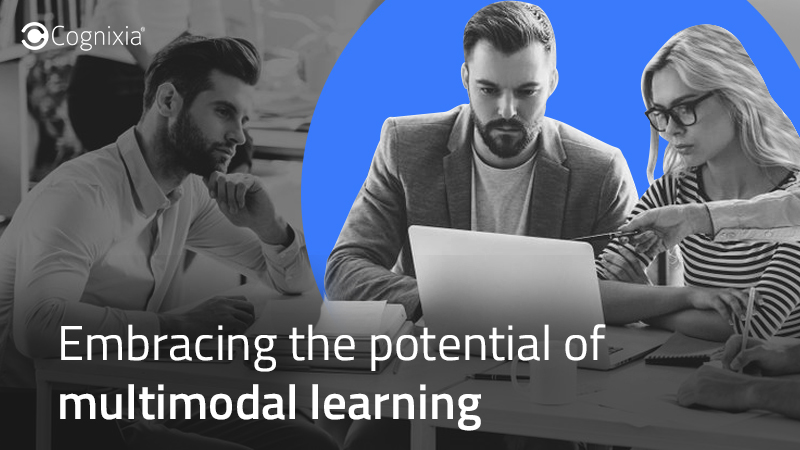Organizations everywhere are warming up to the potential of artificial intelligence. Industries are investing huge amount of resources to deploy this emerging technology hoping to use it to better their productivity and profitability. A report by ABI Research has forecast that by 2024, there would be about 4.471 billion installed devices with artificial intelligence capabilities.
The amount of data being generated by the artificial intelligence devices keeps increasing every day. This presents a very big challenge for technology companies and implementers – how to make all these devices to learn, think and work together?
This can be made possible by embracing multimodal learning, which is why it is the most potentially transformative fields in artificial intelligence.
Multimodal learning brings together disconnected, heterogenous data from different devices into a single model. Most traditional learning systems are unimodal, but a multimodal system can even carry complementary information about each other, which is something that will get identified only when both the pieces of information are brought into the learning process. In this way, learning-based methods that combine signals from different modalities are capable of generating more robust inference, or even new insights, which wouldn’t quite be possible if using unimodal system.

What are the benefits of multimodal learning?
There are two main benefits of using multimodal learning techniques –
- Predictions
- Inference
Predictions
When multiple modality sensors are used to observe the same phenomena, the predictions turn out to be more robust, often because detecting changes in it would likely only be possible when both the modalities are present.
Inferences
When multiple sensor modalities are fused together, they tend to capture a lot of complementary information, such as trends or insights wouldn’t have been captured if a unimodal system was used for capturing.
Multimodal systems and Edge Computing
A lot of use cases for multimodal learning require being implemented at the edge, thereby creating many golden opportunities for chip vendors. To implement multimodal learning systems on the edge would need heterogenous chip systems since they would be able to serve both sequential and parallel processing. The most popular and widely known multimodal learning systems are IBM Watson and Microsoft Azure. Multimodal training exploits complementary aspects of modality data streams, making it a robust technology and enabling new business applications that involves classification, decision-making and human-machine interfaces (HMI).
Of these, the classification multimodal training helps developers classify the data that would not have been possible for them to do with unimodal systems. Using multimodal training, developers can also automate the classification process, improving accuracy and speed. Unimodal learning can also structure the different data streams, but multimodal learning delivers better insights about how the different data streams function with respect to each other, how they impact each other, etc. Multimodal learning would also be immensely helpful in improving the quality of data classification, making way for more meaningful classification. For instance, if a unimodal system was trying to classifying a video, it would use only one parameter, say image recognition; and due to this, it would miss out on important information about the video and audio present in the file.
Decision-making multimodal can be used to help make decision-making systems predict the appropriate responses for current situations. It would also help identify events that would be unfolding in the near future, which would otherwise be practically impossible using a unimodal system. This is one of the most valuable applications of multimodal training and this also plays a major role in automating transport, as well as in robotics.
Commercial research on building human-machine interfaces is increasingly using multimodal learning, as it helps make the HMI software safer, more secure, increases opportunities for personalization while also making it more accurate. This is extremely useful for making companion robots, collaborative robots, in smartphones, in automotive, and many other areas.
Multimodal learning is still in a nascent phase and is yet to become super-popular such as some other areas of AI like DNN. Mostly developers today use multimodal learning when trying to build a specific application or as part of their experimentation in some other area of artificial intelligence, but not as a domain in itself, not as a primary focus. With time, this will change as the world realizes the potential of multimodal learning. The applications of multimodal learning across data science, machine learning, and countless other domains are endless.
Cognixia – world’s leading digital talent transformation company is constantly striving to train and transform digital talent to be able to make the most of the technologies and developments such as multimodal learning. Our carefully crafted training and certification programs have helped individuals and corporate workforce across 46 countries to move ahead in their careers and transform their lives. We regularly update our curriculum to ensure that the latest developments get covered as part of each and every training we deliver, so that our participants can benefit the most from every session they attend. We also try our best to include as many practical examples, activities and exercises as possible in every course we deliver to ensure that all our participants are able to gain a thorough understanding of every concept that is discussed in each session. Our 24×7 support is available for every participant to address their technical as well as course-related queries. To know more about our training programs, reach out to us today.


 Workforce Transformation Consulting
Workforce Transformation Consulting


